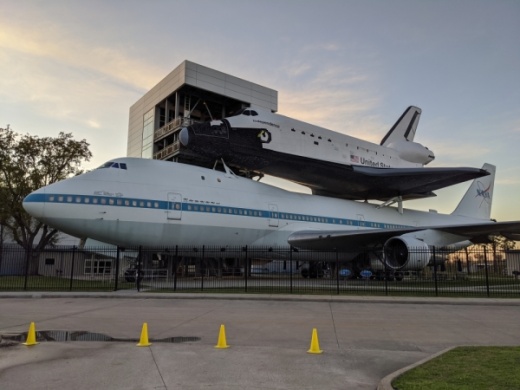Before the coronavirus outbreak, officials at Space Center Houston, one of the largest tourist attractions in the Greater Houston area, said the museum was on pace to set a record-high attendance year. The center broke 1 million annual visitors for the first time in 2018 and saw 1.25 million visitors in 2019, and the center has a goal of seeing 2 million annual visitors, officials said.
However, in the early days of the outbreak, Space Center Houston CEO William Harris said the facility had just begun to see a drop in attendance numbers—about 20% in the last couple weeks of February. At the time, Harris and other officials thought the center would be a good alternative to out-of-state travel for locals trying to avoid the coronavirus and the center would largely be unaffected.
That quickly changed. Less than two weeks later, the center announced it would be closed through March 27, and that was extended less than a week later to April 12.
Still, the center is doing what it can to serve the community despite being closed by providing educational content on social media, daily blog postings on its website and more.
“We’re in this together. We understand that everyone is facing challenges, including supporting their children with educational learning opportunities with limited resources,” CEO William Harris wrote to Community Impact Newspaper. “Throughout our closure, we will work hard and creatively to bring Space Center Houston to the public.”
Kemah Boardwalk, another popular Bay Area tourist spot, also closed around March 20. The drop in attendance to destinations is having a trickle-down effect.
South Shore Harbour Resort and Conference Center—a popular League City hotel that serves corporate groups and tourists alike—closed March 21. Other hotels are feeling the effects as well, said Shawn Reid, the marketing and visitors center for the Bay Area Houston Convention & Visitors Bureau.
“They’re all reporting minimal guest stays, which is to be expected in something like this,” she said. “There’s no tourists around right now.”
Reid, who relies on hotel occupancy tax funds for her budget, does not expect much money in the upcoming quarter and is planning around that, she said.
Dan Seal, the executive director of economic development for the Bay Area Houston Economic Partnership, said the Bay Area is beginning to see a slowdown, with tourist destinations, hotels, restaurants and other businesses all feeling the effects. However, it is too early to say what the long-term effects may be, he said.
Most of the area’s large companies are still operating, and their employees are still being paid. Many businesses in the Bay Area, including in the medical, petrochemical, aerospace industries, are considered essential and allowed to remain open, Seal said.
“That should mitigate this disruption somewhat,” he said. “We probably have more than our fair share of these industries than other places around the country.”
However, many smaller companies are struggling, and it will take them time to bounce back, if they can at all, Seal said.
“There’s no doubt there’s gonna be some of that,” he said.
Seal said the Bay Area has a “can-do spirit” and a sort of resiliency that will allow the area to recover quickly once the coronavirus outbreak subsides. In the end, the Bay Area will be stronger and more nimble, he said.
“It’s already apparent that many of us are already adapting to this new norm,” Seal said. “We’re all just hoping we can get through this in short order.”
Reid agreed.
"It’s just a whole lot of wait and see," she said. “We’re resilient people, so we’ll come through it one way or another.”





